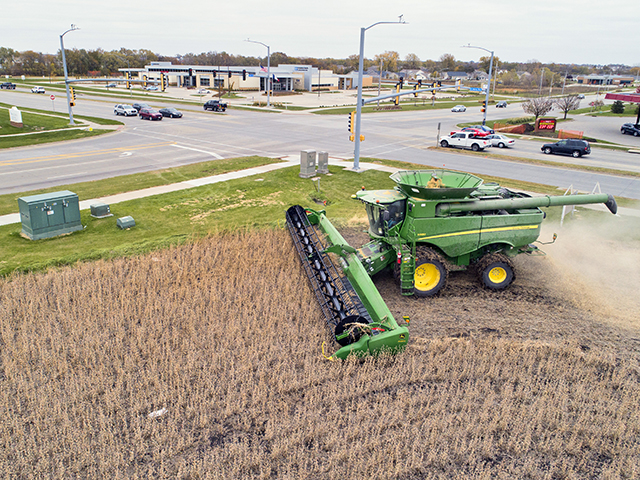Farmland Loss Threatens Food Supply
Land Use - Farmland Loss Threatens Food Supply
The world will lose about 250 million crop-production acres by 2050, according to estimates from the Food and Agriculture Organization of the United Nations.
The possibility of losing the equivalent of roughly two-thirds of the cultivated land in the United States is alarming, says Jerry Hatfield, director of the U.S. Department of Agriculture's National Laboratory for Agriculture and the Environment, in Ames, Iowa. But, he believes it can be prevented.
Hatfield says urbanization and soil degradation from excessive tillage and other farming practices are largely to blame for lost farm and ranchlands.
If society doesn't do a better job making land-use decisions and taking care of the soil, he is afraid hunger and food insecurity will be much more prevalent in 30 years, when the world's population is expected to top 9 billion.
"To improve the stability of agriculture production going forward, we will have to improve and protect our soils," Hatfield continues.
The American Farmland Trust (AFT), a nonprofit organization committed to the protection of farmland, recently released "Farms Under Threat: The State of the States." The multiyear study identifies farm and ranchland acres lost to development and ways to protect it.
From 2001 to 2016, 11 million acres of agricultural land were paved over, converted or fragmented, according to the study. Roughly 4.4 million acres were classified as "nationally significant," or the best land for food and crop production.
P[L1] D[0x0] M[300x250] OOP[F] ADUNIT[] T[]
"The threat to farmland is real," says John Piotti, AFT president and CEO. "The report is about getting farming right before it's too late."
Hatfield recommends all cities build up and not out, and develop land less suitable for agriculture.
Extending crop rotations, adopting no-till or conservation tillage, and planting cover crops to improve soil health are just a few proven ways farmers and landowners can help, he asserts.
"If all these things work together, we can preserve highly productive agricultural land," Hatfield adds.
FARMER FIGHT
Fred Yoder, a farmer from Plain City, Ohio, is also co-chair of Solutions from the Land, a national farm advocacy group. The organization is at the forefront of resolving food system, energy, environmental and climate challenges facing agriculture.
Yoder farms 1,800 acres about 20 miles west of Columbus, the rapidly growing state capital of Ohio. Instead of revitalizing areas of the city that need it, he says developers push outward into farm country.
The mayor of Plain City, which is near Columbus, has asked Yoder multiple times to voluntarily annex 400 acres he owns on the east and west side of town to make it easier to develop. He's refused so far.
"I said I make my living here, and I want to farm," Yoder recalls, understanding that may change if a financial offer for his land is made someday that's too good to refuse. "We're losing land right and left to urban encroachment. We need to stop, pause and look ahead."
AFT recently announced what leaders describe as a "bold, new goal" to protect farmland and deter urban sprawl, primarily from low-density development.
The group will act to double permanently protected farmland by 2040 and reduce the rate of conversion by half by 2030 and by 75% by 2040. It's establishing the National Agricultural Land Network, a nationwide network of land trusts and government entities focused on protecting agricultural lands, to help meet the goals.
"AFT is taking action, but we can't do it alone," Piotti says. "We [all] need to take action."
> Follow Matthew Wilde on Twitter @progressivwilde.
[PF_0221]
(c) Copyright 2021 DTN, LLC. All rights reserved.




